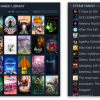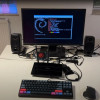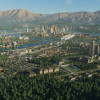Returning to Second Life

A decade ago, dozens of media outlets and technologists discovered "The Next Internet." An original cyberspace science fiction fantasy had finally come to fruition as the world gained a second digitized reality. In a short period of time, countries established embassies, media companies opened bureaus, one of Earth’s biggest rock bands played a concert (sort of), political campaigns took to its streets, and people became real-world millionaires plying their skills in this new arena.
That much hyped "Next Internet?" You may remember it better by its official name—Second Life. For many modern Internet users, the platform has likely faded far, far from memory. But there’s no denying the cultural impact Second Life had during the brief height of its popularity.
Explaining Second Life today as a MMORG or a social media platform undersells things for the unfamiliar; Second Life became an entirely alternative online world for its users. And it wasn’t just the likes of Reuters and U2 lookalikes and Sweden embracing this platform. Second Life boasted 1.1 million active users at its peak roughly a decade ago. Even cultural behemoth Facebook only boasted 20 million at the time.









































































